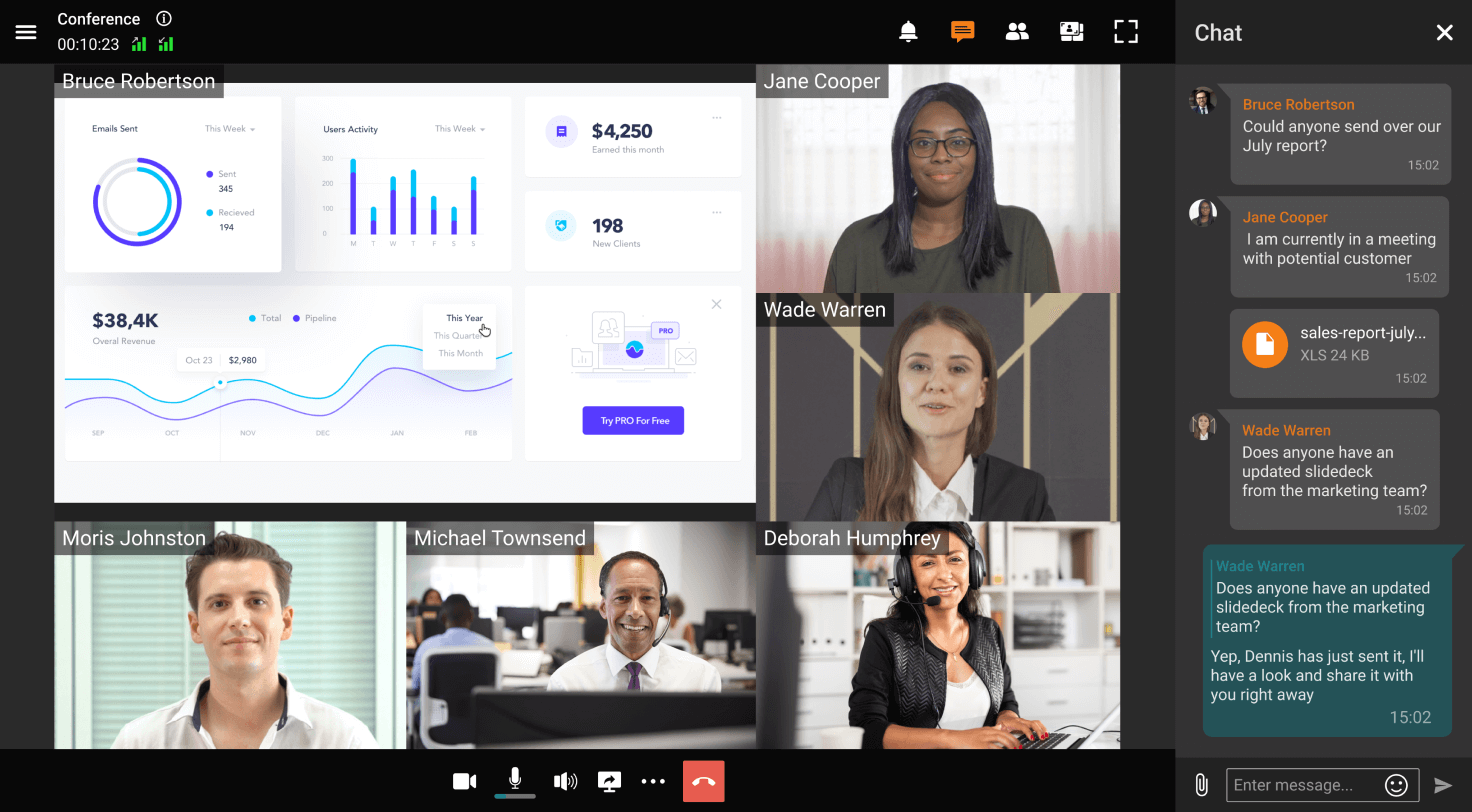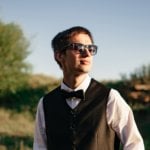Managed Video Conferencing Services: Types and Benefits
What is Managed Video Conferencing?
Managed video conferencing involves a company engaging a specialized provider to manage their video conferencing requirements. This provider is responsible for setting up the system, maintaining it, and providing technical support. The service guarantees high-quality audio and video, adheres to security protocols, and ensures a stable connection across various devices. This enables companies to concentrate on their core activities, while the provider enhances their video communication.

With the assistance of these services, businesses can concentrate on their primary tasks while utilizing specialized knowledge to enhance their video communication setup and reduce costs by outsourcing management to experts.
Benefits of Managed Video Conferencing Services
Managed video conferencing services provide numerous advantages:
- Reliability: These services offer high reliability and consistent availability for video conferencing systems, reducing the risk of technical problems or interruptions during meetings.
- Security: They feature robust security measures, including encryption, secure authentication, and strict access controls to protect sensitive information shared in meetings.
- Integration: Managed services can seamlessly integrate with various systems such as calendars, email systems, and project management software.
- Cost Savings: Organizations frequently reduce expenses by contracting third-party providers to manage their video conferencing systems, rather than sustaining internal infrastructure and support teams.
- Access to Advanced Features: Managed service providers often include advanced functionalities such as virtual backgrounds, whiteboard features, and real-time language translation.
3 Models of Managed Video Services
The following outlines the three primary models for managed video services:
On-Premises Managed Services:
This model assumes that video conferencing service is deployed and operated within the organization’s own infrastructure. This way, the organization gains full control over the hardware, software, and network resources used for a video meeting. Managed service providers offer support, maintenance, and optimization services for on-premises video conferencing systems. While this model provides customization and control, it can require an initial investment in infrastructure and resources.
Key Advantages:
- Full Control & Customization: Organizations maintain total control over hardware, software, and network configurations. This enables deep customization of features, integrations, and user policies.
- Data Security & Compliance: Sensitive data never leaves the internal network, which can be critical for industries with strict regulatory requirements (e.g., finance, government, healthcare).
- Consistent Performance: Local infrastructure ensures high-quality video and minimal latency, especially beneficial for internal communications in large campuses or locations with unreliable internet.
- Dedicated IT Oversight: The in-house IT team, often supported by the managed services provider, ensures systems are patched, optimized, and ready for mission-critical usage.
Take your team communication to the next level with TrueConf!
A powerful self-hosted video conferencing solution for up to 1,000 users, available on desktop, mobile, and room systems.
Cloud-Based Managed Services:
In a cloud-based setup, an outside provider hosts and manages the video conferencing service online. Organizations access this service via the Internet, and the provider handles maintenance, updates, security, and scalability. This arrangement allows organizations to concentrate on using the service efficiently. The model is adaptable and cost-effective, as companies only pay for their subscriptions. Cloud cost becomes a significant factor in this model, as organizations pay solely for the services they utilize, making it an economical option. This ensures they maximize efficiency without overpaying for unnecessary capacity or features.
Key Advantages:
- Low Barrier to Entry: No need to invest in costly hardware or maintain physical servers. Organizations can deploy video services almost instantly.
- Scalability & Flexibility: Cloud platforms can instantly scale up or down to match user demand, perfect for hybrid workforces or growing teams.
- Cost Efficiency with Usage-Based Billing: Most providers offer subscription models where you only pay for what you use. Through cloud cost optimization, combined with AI-driven SaaS development solutions and analytics, businesses can fine-tune spending based on real-time usage patterns, ensuring resources are scaled appropriately without overspending.
- Built-in AI & Automation: Modern platforms integrate AI in SaaS tools that analyze usage, predict future demand, and automate updates or cost control strategies.
- Streamlined SaaS Procurement: A strategic SaaS procurement process helps businesses evaluate providers, negotiate better pricing, and eliminate unnecessary features—ensuring they align service capabilities with their exact operational goals.
Hybrid Managed Services:
This approach merges on-premises elements with cloud services. Organizations keep certain video conferencing infrastructure in-house while leveraging cloud services for extra features or scaling capabilities. This method allows for customizing solutions to specific needs, tackling security issues, or complying with regulatory pressures. Businesses gain from having both local control and the scalability of the cloud, adapting their systems to suit their particular requirements. By integrating cloud cost monitoring tools, businesses can achieve cost efficiency while balancing the advantages of on-premises infrastructure and cloud capabilities.
Key Advantages:
- Best of Both Worlds: Combines local control with cloud-based scalability and flexibility. Organizations can fine-tune where specific services are hosted based on sensitivity, usage, or location.
- Regulatory Flexibility: Store sensitive data or user records on-premises while offloading less sensitive services (like guest access or mobile connectivity) to the cloud.
- Smooth Scalability: During high-demand periods (e.g., large events, seasonal peaks), organizations can expand capacity through the cloud without adding new hardware.
- Cost Optimization Tools: Cloud cost monitoring and resource tracking allow businesses to maintain financial control while leveraging scalable services. This balance is ideal for complex IT environments or multinational teams.
- Business Continuity: With systems distributed across on-prem and cloud, organizations can ensure redundancy and maintain communications even if one system fails.
How do Managed Video Conferencing Services Work?
Managed video conferencing services work by outsourcing the setup, maintenance, and technical support of video conferencing systems to a specialized provider. Here’s how they typically operate:
- Initial Assessment: The managed service provider (MSP) begins by evaluating the client’s requirements. This includes determining the number of users, necessary features, existing infrastructure, and budget limitations.
- System Design and Implementation: Following the assessment, the MSP creates a customized video conferencing solution. This involves selecting suitable hardware, such as cameras and microphones, along with software that aligns with the client’s needs.
- Monitoring and Maintenance: The MSP persistently oversees the system’s performance to ensure optimal operation. They address technical problems, implement software updates, and conduct regular maintenance to minimize downtime and boost reliability.
- Performance Optimization: The MSP aims to enhance the system’s performance and user experience by adjusting network configurations, upgrading equipment, or incorporating new features to adapt to changing business demands.
How to Choose a Managed Video Services Provider?
Selecting a managed video services provider is crucial for setting up reliable and efficient video conferencing within your organization. Here are five specific tips to guide you in making an informed choice:
1. Evaluate Your Requirements
Prior to making a choice, assess your organization’s particular needs for video conferencing. Consider aspects such as the number of users, preferred features (like screen sharing or recording), compatibility with current systems, and budget constraints.
2. Check Technical Qualifications
Seek out a managed video services provider with a robust technical background and experience in deploying and managing video conferencing platforms. Examine their certifications, partnerships with leading technology providers (such as TrueConf, Zoom, or Microsoft Teams), and client feedback or case studies demonstrating successful implementations.
3. Prioritize Reliability and Performance
When choosing a managed video service provider, it’s important to prioritize reliability and performance. Evaluate their infrastructure by examining network capabilities, cloud monitoring, and their use of data center reliability tools. Additionally, review their backup systems to ensure seamless video conferencing experiences. Inquire about their uptime commitments, service level agreements (SLAs), and their strategies to manage potential outages.
4. Consider Security Protocols
Verify that the managed video services provider applies robust security measures to safeguard customer data and privacy. Look for features like end-to-end encryption, multi-factor authentication, and adherence to industry standards such as GDPR or HIPAA. Utilizing a secure customer data platform (CDP) is an effective strategy to protect customer data, as it gathers and manages information from multiple channels and touchpoints.
Use Cases of Managed Video Conferencing Services
Managed video conferencing services offer scalable, secure, and professionally supported communication tools tailored to diverse organizational needs. Below are the most common use cases across industries:
Executive and Boardroom Meetings
Organizations rely on managed video conferencing for mission-critical executive sessions and board meetings. These services ensure high availability, privacy, and HD-quality connections, often with white-glove support to handle setup, monitoring, and troubleshooting in real time.
Remote Workforce Collaboration
For distributed teams and hybrid workplaces, managed services enable seamless collaboration with minimal technical friction. IT teams can offload support responsibilities to a managed provider, ensuring employees stay connected across locations, devices, and time zones without disruptions.
Customer Support and Virtual Consultations
Companies in healthcare, finance, and professional services use managed video conferencing to deliver secure, compliant virtual appointments and customer consultations. Features like end-to-end encryption, waiting rooms, and branding customization help enhance trust and engagement.
Training, Webinars, and Town Halls
Large-scale internal and external events such as employee onboarding, product training, and corporate town halls — often coordinated by white label marketing agencies — benefit from managed solutions that offer event support, high-capacity streaming, participant engagement tools (Q&A, polls), and analytics.
Conclusion
Adopting managed video conferencing solutions brings numerous advantages for companies, such as enhanced productivity, better collaboration, and reduced costs across various departments and locations. By thoroughly assessing and aligning with specific organizational needs and goals, the appropriate managed video service provider allows businesses to maximize the potential of video communication technology. This results in smooth information sharing, fosters teamwork, and aids businesses in succeeding in an ever-evolving business landscape.
About the Author
Nikita Dymenko is a technology writer and business development professional with more than six years of experience in the unified communications industry. Drawing on his background in product management, strategic growth, and business development at TrueConf, Nikita creates insightful articles and reviews about video conferencing platforms, collaboration tools, and enterprise messaging solutions.






Follow us on social networks